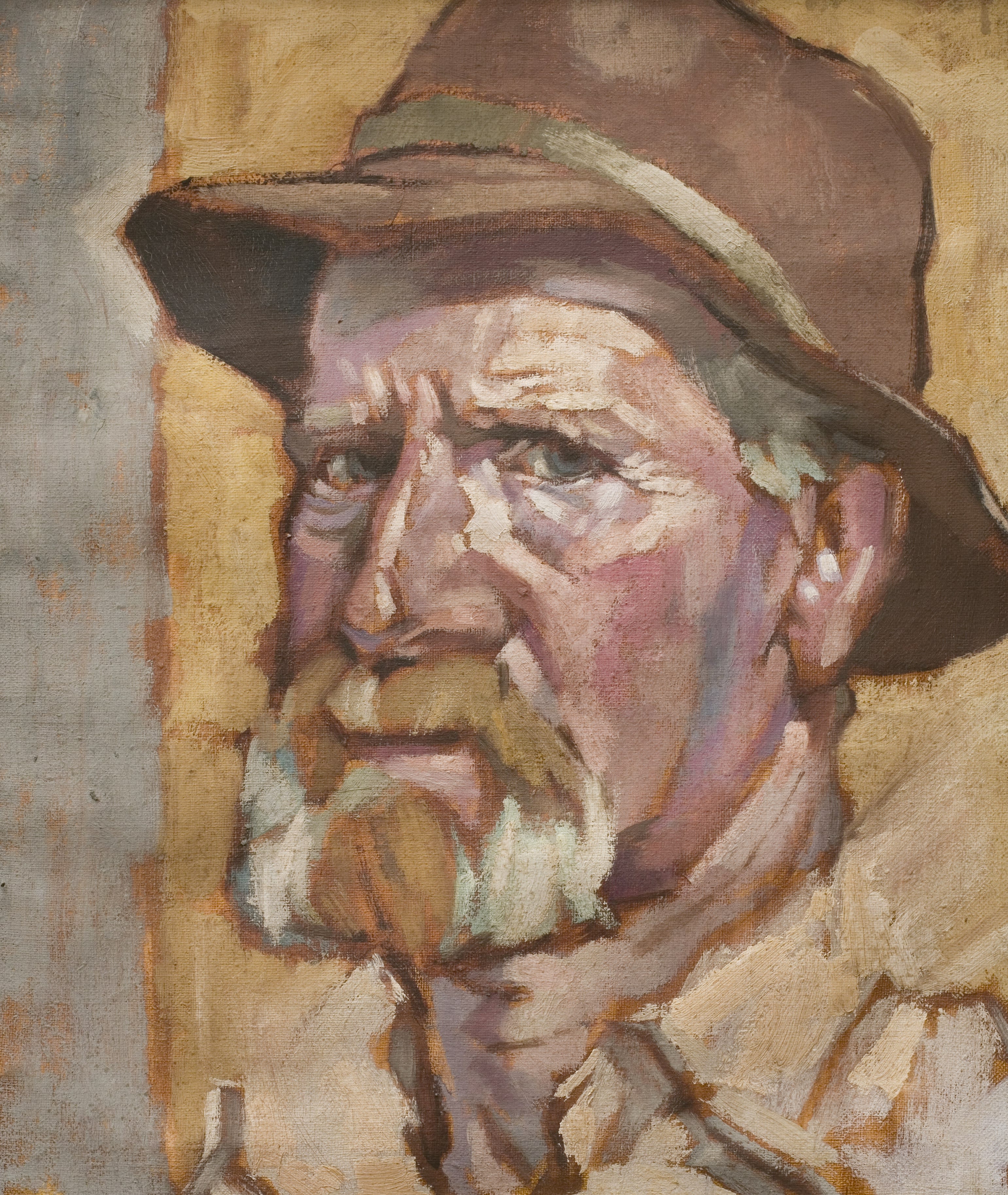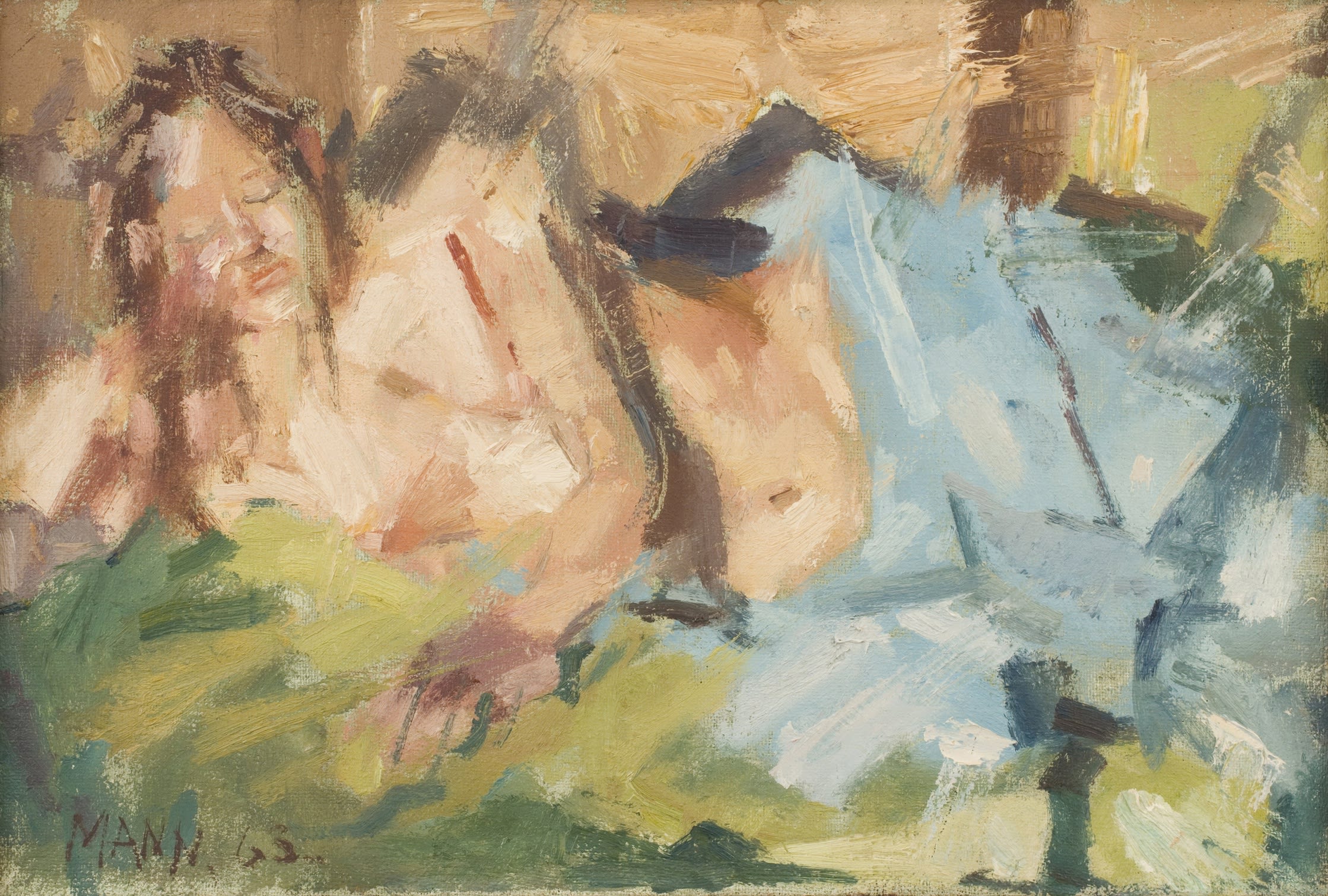As a new stage adaptation of Cyril Mann’s life opens at The Playground Theatre this week, InSight tells the story of his love affair with a woman twenty-eight years his junior.
InSight No. 145
Cyril Mann, Self-Portrait, c. 1968

In 1959, a young woman called Renske van Slooten arrived in London from Dordrecht. She had come to work as a bilingual Anglo-Dutch secretary in the City, but she had a desire to study art that led her to Kingsway Day College, Holborn. It was there that she first set eyes on the painter Cyril Mann (1911—1980). As she later wrote in a memoir about her relationship with Mann, published in 2022, she was immediately drawn to him:
He was unlike any man I had ever met. Deep-set, downturned eyes gave him a sad look. I noticed his florid complexion, his sunken cheeks and sensitive mouth. His air of distracted intensity reminded me of a sketch I had seen of Leonardo da Vinci in old age.

She was twenty-years-old, he was 49—this made her just one year older than his daughter from a failed first marriage, while he was a year older than her mother. Yet Renske was no ingénue. She was born in the colonial Dutch East Indies shortly before World War II, and the Japanese invasion of Java in 1942 brought an end to her family’s settled middle-class existence. Her father survived imprisonment and the family moved to Batavia (present-day Jakarta), but the van Slootens then found themselves in the maelstrom of a bloody fight for independence. Against the backdrop of an exhausted colonial polity and acute political tension, her family along with many thousands of other Dutch Indonesians were made to flea as Indonesia eventually won its independence in 1949. Growing up in Dordrecht, Renske had an unhappy childhood and before coming to England she had ‘already escaped a doomed love affair with a married man fourteen years my senior.

The day after their first encounter, Cyril and Renske arranged to meet outside the Lyons’ café at The Angel, Islington. She wore ‘a brand-new pair of red stilettos that were […] killing me’. He was late, but she waited. Later at his flat in Bevin Court, she agreed to model for him.

To the anguish of her family and colleagues, she moved in with him. Yet Renske was determined:
The truth was that I was the one doing all the running and had been ever since I first met Cyril. He was my lover, protector, teacher and surrogate father. […] Most of all, I wanted to marry him, but he would have to divorce [his first wife] Mary first.
Divorce they did and in September 1960 Cyril and Renske were married at Finsbury Town Hall. With her as his muse and companion, Mann was beguiled by commonplace sights and surroundings. He was often direct in his pursuit of a desired motif. One morning, rising from the single bed they shared, Mann opened the curtains and shouted at Renske: ‘Don’t move. Don’t you fucking move!’ He brought his work materials and painted her where she stood.

Renske’s arrival in his life coincided with a moment of crystallisation in Mann’s practice. Since the war he had made paintings in which the quality of daylight and shadow were carefully constructed. By 1960, however, after moving to a bright flat in Bevin Court (see InSight 27), he discovered a new sense of fluency. In paintings of Renske such as Reclining Nude II, the marks of his brush (not sable but hog’s hair) became wider and more gestural and the image was realised palpably in terms of the paint itself. The sense of freedom was partly owing to Mann’s occasional habit of looking through ‘a shard of frosted glass […] to blur what he saw’. Newly confident with the support and admiration of this young woman, ardent in the artistic pursuit of his new sitter, such unusual methods suggest the pugnacity, bravura and independent spirit of the man and his work.
Images
1. Cyril Mann, Self-Portrait, c. 1968, oil on canvas, 51 x 43.5 cm
2. Unattributed, Portrait of a Man in Red Chalk, c. 1512, Biblioteca Reale, Turin
3. Cyril Mann, Reclining Nude II, 1963, oil on canvas, 52 x 76 cm
4. Lyons’ café at The Angel, Islington, c. 1922
5. Cyril Mann, Self-Portrait with Palette and Brush, 1962, oil on canvas, 91.2 x 53.4 cm

